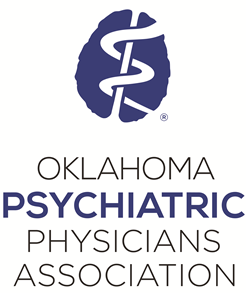To Zithromax Without Insurance Visit Our Pharmacy ↓

Beyond the Myths: Understanding Zithromax and its Side Effects
Taking more than the recommended amount or using it for an extended period can increase the risk of side effects. The drug comes in a single-dose packet, making it easy to take and track medication. As such, Zithromax is emerging as a valuable addition to the existing arsenal of asthma therapies, offering hope to those with persistent symptoms. It is recommended to consult with a dermatologist or healthcare provider to determine the best course of acne treatment. It is especially valuable for those who suffer from recurring infections or are particularly sensitive to other antibiotics. Antibiotics are available in various forms, including pills, capsules, injections, and creams. Its long half-life, good tissue penetration, and relatively safe side-effect profile make it an attractive candidate for longer-term use in reducing inflammatory markers and improving clinical outcomes.
The benefits of early treatment: How Zithromax can stop respiratory infections in their tracks
This includes but is not limited to bronchitis, pneumonia, sexually transmitted diseases, and infections of the ears, lungs, sinuses, skin, and throat. These effects can result in symptoms such as palpitations or a sensation of the heart racing, which are signals to pay close attention to your cardiovascular health. The main cause of Traveler's Diarrhea is the ingestion of contaminated food or water, typically from bacteria, viruses, or parasites. Unlike other antibiotics, Zithromax can be taken once daily for a shorter duration of time, making it more convenient for patients. Zithromax, a macrolide antibiotic, works by inhibiting bacteria's protein synthesis, halting their growth. Finally, we'll examine the hidden dangers of Zithromax and the pros and cons of deciding if this medication is right for you. Additionally, overuse or misuse of azithromycin can contribute to the growing problem of antibiotic resistance, which is a significant concern in the medical community.
Cost Considerations: Balancing Budget and Efficacy
Its uses range from treating respiratory infections such as pneumonia, bronchitis, sinusitis to sexually transmitted infections such as chlamydia and gonorrhea. Zithromax works by inhibiting the growth of bacteria, thus stopping the spread of the infection. Zithromax, also known as azithromycin, has become a popular antibiotic for treating respiratory tract infections such as bronchitis and pneumonia. This widespread improper use significantly contributes to the acceleration of antibiotic resistance, including resistance to medications like Zithromax (azithromycin). It is also used to treat sexually transmitted diseases such as chlamydia and gonorrhea. Overall, Zithromax remains a powerful tool in the arsenal of medications available to healthcare professionals. Macrolides work by binding to the 50S ribosomal subunit of bacterial cells, thereby inhibiting protein synthesis, which is crucial for bacterial growth and replication.
The Future of Medicine: Zithromax's Potential to Revolutionize the Healthcare Industry
It is highly effective against a range of bacteria that cause these types of infections. It is often prescribed as a convenient single-dose treatment, reducing the overall duration of therapy. The early symptoms of Lyme disease include fever, headache, fatigue, and a characteristic rash known as erythema migrans that develops at the site of the tick bite. Liquid suspension forms of azithromycin are available for younger children who may have difficulty swallowing tablets, and the taste is often well-tolerated by young patients. From respiratory tract infections to skin and soft tissue infections, Zithromax has been proven to be highly effective. From there, it is distributed to various tissues, allowing it to effectively target infections both inside and outside of the bloodstream. This makes it a popular choice for both patients and doctors alike.
Side Effects and Precautions of Zithromax
The conflicting results of various studies have presented a challenge for healthcare providers in deciding whether to prescribe it to their patients or not. Recently, it has also gained popularity as a potential treatment for acne. Hence, if you want to recover quickly from your respiratory infection without worrying about its side effects or resistance, Zithromax should be your go-to option. While it is effective against a wide range of bacterial infections, including ear infections, skin infections, and respiratory infections, it also comes with potential risks and side effects. Furthermore, Zithromax offers convenience and ease of use as a treatment for acne. Experiencing side effects is often a concern when taking medications like Zithromax. Antibiotics have long been heralded as medicinal marvels, indispensable in combating bacterial infections.
Zithromax and Amoxicillin: Comparing Efficacy and Side Effects
Travelers must adhere to the regimen their doctor recommends and continue to take the prescribed dose even after symptoms have alleviated. Additionally, Zithromax is commonly used to treat skin and soft tissue infections, including impetigo and cellulitis. Additionally, prompt treatment may reduce the risk of spreading the infection to others. Compared to amoxicillin, zithromax is known for its longer half-life, allowing for a shorter duration of script – sometimes just once-daily doses are enough. Zithromax has demonstrated significant clinical efficacy in treating various bacterial infections. We will delve into the controversy surrounding this medication and provide a comprehensive understanding of its risks and benefits. Always consult with your healthcare provider to determine if Zithromax is the appropriate treatment for your specific condition.
The Mechanism of Action: How Zithromax Works in the Body
Zithromax works by interfering with the creation of bacteria’s ability to reproduce, ultimately leading to their death. However, there are more serious side effects to consider, such as hearing changes, eye problems, or liver issues, which require immediate medical attention. In recent years, concerns have arisen over the potential link between the popular antibiotic Zithromax and fatal heart issues. Zithromax works by stopping the growth of bacteria, ultimately leading to their elimination from the body. The drug's effectiveness, minimal side effects, and impressive resistance to bacteria make it an essential tool in the treatment of infectious diseases. For certain conditions, such as chlamydia, Zithromax may be given as a single, larger dose, while for others like pneumonia, it may be prescribed to be taken over several days. Finally, we will discuss the potential benefits and side effects of taking this medication, as well as its role in the future of antibiotics and combating bacterial infections.
Know When to Consult Your Healthcare Provider
If you are prescribed Zithromax (Azithromycin), it is essential to follow the correct dosage. Secondly, Zithromax has a remarkable ability to accumulate rapidly within infected tissues, allowing for a higher concentration of the drug at the site of infection. The impact of Zithromax on pediatric patients often comes to light through personal experiences shared by parents and healthcare professionals. Thus, its effectiveness is underscored by both its broad-spectrum capacity and patient-friendly dosing regimen, positioning Zithromax as a go-to antibiotic for clinicians. By exploring its benefits and risks in depth, patients can make an informed decision about whether it's worth the try for acne-free skin. These measures, along with responsible prescribing practices, are critical in preserving the effectiveness of Zithromax for future generations, maintaining it as a powerful weapon in the pediatrician's arsenal against bacterial infections. On the other hand, broader-spectrum antibiotics like amoxicillin are often UDs, prescribed to tackle a wide swath of bacterial strains, whereas Zithromax might be chosen for its potency in targeted cases.
Conclusion and Future Potential of Zithromax
Moreover, the future might see an increased emphasis on preventive measures such as vaccines that directly reduce the incidence of bacterial infections, thereby decreasing the reliance on antibiotics altogether. Acne is a common skin condition that affects millions of people worldwide, causing not only physical discomfort but also emotional distress. Furthermore, understanding how Zithromax impacts bacteria can help patients have a clearer understanding of the medication and its effectiveness. These solutions may include developing alternative treatment options such as phage therapy or immune-based therapies, as well as enhancing infection prevention practices and promoting the responsible use of antibiotics. In this second section of the article, we will dive deeper into the truths about Zithromax. With ongoing research and advancements, it is hoped that the usage of Zithromax will contribute to a reduction in antibiotic resistance and improve global health outcomes. It works by preventing the growth and spread of bacteria in the body.
Dosage Guidelines for Treating Respiratory Infections
Ensure the child finishes the entire course, even if they start to feel better. Additionally, Zithromax has a relatively low risk of causing gastrointestinal side effects, making it a popular choice for individuals who may be sensitive to other antibiotics commonly used for acne treatment. Common side effects include nausea, abdominal pain, and diarrhea, which often subside without intervention. But don't let its ease of use fool you; this comp is powerful, effectively halting bacterial growth and offering swift relief when taken as sig. Once prescribed, it's crucial that the course of antibiotics is completed as directed to avoid incomplete treatment of the infection and to reduce the risk of resistance development. Zithromax is an antibiotic that works by inhibiting bacterial protein synthesis. This article will explore the various respiratory infections that Zithromax can treat, the mechanisms by which it works, its safety record, and the additional benefits it can offer for patients with chronic respiratory conditions.
